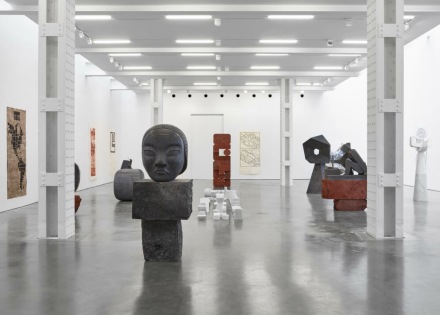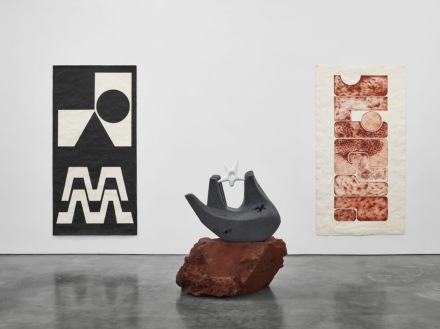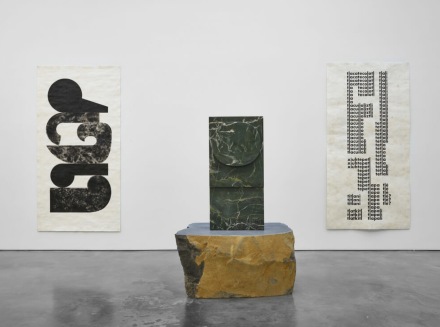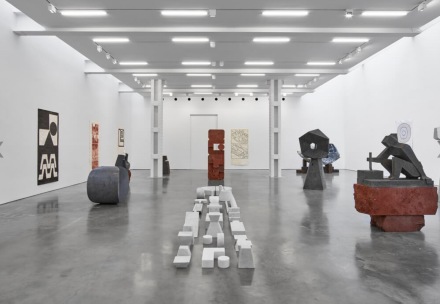
Pedro Reyes, Tlali (Installation View), via Lisson
Pedro Reyes returns to Lisson Gallery in New York this month with Tlali, an impressively dense and exploratory exhibition that a new series of sculptures and works on paper drawn from the language and symbols of Pre-Columbian civilizations. Drawing on the history and social economies of the Aztec language Nahuatl, the show turns a local historical and linguistic thread into a broader reflection on the state of the world and the broader political and social landscape of modernity.

Pedro Reyes, Tlali (Installation View), via Lisson
Drawing the notion of the world and specifically that of the North American continent as an inherently problematized power relation, Reyes’s show title points directly to the interference between European and Pre-Colombian iconographies of the world. Even the name America, he hints, was adapted from the conquistador Amerigo Vespucci, responsible for the enslavement and death of countless indigenous communities. Here, Tlali becomes an alternative, allegorical name for the continent. Featuring fourteen carved stone sculptures along with eleven drawings on amate, the presentation engages with Mayan, Olmec, Toltec and Mexica heritage and serves as a reminder of the very foundations of the American continent.

Pedro Reyes, Tlali (Installation View), via Lisson
For Reyes, the experience of language and place are inextricably linked, and provide an underlying context through which Mexican citizens can better understand their world and landscape. “It is imperative for a Mexican artist to learn Nahuatl,” he says. “Proportionate to the use of Latin in the United States, many places in Mexico have a name in Nahuatl, so learning the language is vital to understanding the region’s geography and anthropology.” The result here is an exploration of language and its relations to architecture and form, sculptures and wall-mounted works that emphasize place and history in relation to a specific, internal linguistic experience. These are works imbued with meaning from the language that spawns their history and modes of generation, a symbolism linked to, and always reflecting, the language that produced it. The sculptures displayed throughout the exhibition feature the distinct geometric vocabulary used to depict human figures or architectural models by the Mesoamerican civilizations. Using red tezontle, volcanic stone, jadeite, and white marble Reyes continues his deeply political practice through the creation of new totemic and abstract forms.

Pedro Reyes, Tlali (Installation View), via Lisson
Coatl (snake), a volcanic stone work at 157 inches high, resembles the snake’s rattle movement. Where Eastern civilizations elected to meditate sitting, Pre-Columbian cultures opted for a peripatetic practice. Another totemic structure, Huehueteotl (the old god of fire), reminds of us of the monumentality of the classic Pre-Columbian sculpture Los atlantes de Tula, Toltec warriors that supported temple structures. Ueueyeyeko (ancient knowledge) is a series of marble carvings that symbolize the plethora of symbolic objects found at a burial site, serving as a commentary on how this act of detachment likely differs from our experience of offerings today given the importance placed on personal ownership.

Pedro Reyes, Tlali (Installation View), via Lisson
Exploring the work as a mode through which one produces shared history and awareness through language, Reyes’s work is a powerful exploration of place as both ground and subject.
The show closes June 18th.
– D. Creahan
Read more:
Pedro Reyes: Tlali [Exhibition Site]



